It's easy to understand why Princess and many other cruise lines visit Cobh on UK cruises.
Passengers can simply walk into Cobh and enjoy a great day in an Irish seaport town.
Caribbean Princess ported literally by a rail station making it simple to catch a train to the city of Cork.
On our first visit to Ireland in 2002, we skipped the seemingly obligatory tourist trap --- Blarney Castle --- not to mention "Kissing the Blarney Stone." Oddly, the blog post in which I gave a passing nod to this travel cliché is titled Ardmore, the same name as the city in Pennsylvania we now call home.
When younger, perhaps we were more practical, but in recent years we've performed heroics like saving the Leaning Tower of Pisa from toppling over with a single finger.
It turns out those activities dismissed as banal can be fun.
I will add that Kissing the Blarney Stone was actually more exciting that I thought it would be.
While Princess had many shore excursions in Cobh, Julie and I chose a Viator Shore Excursion to Blarney Castle and Kinsale.
"Shore Excursion" designation meant it was created for cruise customers like tours offered by the ship and Shore Excursions Group. These Viator Tours comply with cruise ship schedules, making them easier to catch at a convenient meeting place and returning before our ship sails.
We found the bus relatively quickly upon debarking the ship and were soon on our way toward Cork.
Our guide Kevin commended us all for being on time, adding that meant we would be among the first to arrive at Blarney Castle.
Kevin went on to advise those of us interested in Kissing the Blarney Stone to go directly there upon entering.
Sure to his word, we were the second bus on site and had a great spot in the queue when the gates opened.
Julie and I walked apace toward Blarney Castle, not to the point of pushing people with mobility issues out of the way nor getting out of breath.
We strolled right into the door at the bottom of the circular staircase leading up to the famous stone.
There are many origin stories for the stone.
Kevin believed it was a piece of the Stone of Scone (Stone of Destiny) used in the coronation of Scottish kings at least as far back as Robert the Bruce. It was given to Cormac MacCarthy for bringing 5,000 Irish troops to assist the Scots in defeating the British at the Battle of Bannockburn in 1314, bringing independence to Scotland.
The MacCarthy of Muskerry family embedded the stone high in Blarney Castle when they re-built it in 1446 on the fortress site where the prior castle had been destroyed.
Good story.
Other stories claim the Stone has some connections Biblical stories, the Crusades or Stonehenge.
As it turns out, modern science --- like a handy smart phone quickly putting an end to the types of wild speculation we enjoyed as kids --- has proven the Blarney Stone had ancient geologic origins in Southern Ireland, so not far from the Castle.
At the top level, we had a bird's eye view of the levels of the castle below us and distant panoramas.
Mist shrouded distant vistas, but that added to the magic of the moment in an ethereal way.
That heavy mist made the stone a bit slippery, so when lowering down on our backs to look up at the Blarney Stone to kiss it, we felt a tinge of danger about slipping through the hole in the floor below the Stone and plunging to our deaths.
Needless to add, that didn't happen, at least partly because a couple of spotters carefully guide our movement.
Julie and I both kissed the Blarney Stone and lived to tell the tale.
The grounds surrounding the castle include many garden sections, including a poison garden, which brought to mind the poison garden in the most recent James Bond movie, which we watched on our in-room TV on an upcoming sea day.
Why would anyone have such a garden?
Ostensibly to warn any would-be foragers of the dangers of these plants should they be found.
But an active imagination can envision how access to natural toxins might figure into palace intrigues including murder.
Almost as weird was the carnivorous garden.
I don't think any would fit the title of that old Hall & Oates song, Maneater, but small animals and bugs had best beware.
Blarney Castle and its grounds give ample proof of why "a bit of the Blarney" has become known internationally as charming, persuasive talk with a touch of exaggeration or outright nonsense.
My kids would say I had that gift of gab long before I kissed the Blarney Stone.
There are many other garden sections, usually with a story to explain its existence. At Blarney Castle, the MacCarthy's wouldn't just settle for having seven standing stones in the spirit of Stonehenge.
No, there's always more to the story.
"The Seven Sisters" stand as a reminder to a grieving father who lost his two sons in battle, motivating him to knock down two of the ancient stones so that only the Seven Sisters remain.
What kind of fantasy garden would be complete without a Fairy Glade?
We spent a couple of hours sauntering around the grounds, enjoying the various gardens and elfin forest paths.
All good things must sooner or later make room for some other great activity, lest we risk becoming bored, and our bus eventually rolled on schedule toward our second destination, Kinsale.
Our first stop was Charles Fort, a star-shaped fortress completed in 1682 on a strategic site on Kinsale Harbor. The five points of the star are bastions intended to resist gunpower cannon attacks that made castles obsolete.
Like Blarney Castle and Cardiff Castle, the prime location had already been used for centuries for defensive purposes by the time the newer fortress was completed in 1682.
The fort is named for Charles II, King of England, Scotland and Ireland. When Charles died, his heir was James II, a Protestant with more strident adherence to his religion thanks to his mother.
Catholics and religious moderates in the model of Queen Elizabeth I replaced James II with Mary, a Catholic daughter of Charles II by a different mother, who married William of Orange (The Netherlands).
When rebellion broke out to restore James II, with his supporters, the original Jacobites, who were opposed by the Williamites. The Irish like the Scots sided with the Jacobites. Fort Charles held out against a siege by the government for 13-days before meeting the fate of all castles in an age of modern weaponry.
Most of us know more about what George Lucas might call The Return of the Jacobites, when about 50 years later Bonnie Prince Charlie tried to reclaim the throne and ended up escaping Scotland dressed as a woman.
The site has lovely views of surrounding countryside.
In the harborside village of Kinsale, we were given an hour and a half on our own to find lunch and walk around the shops.
I was ready for Guinness Beef Pie, which we had enjoyed so much in Dublin five years earlier, but oddly none of the restaurants had that on their menus. They referred us to places that might have it, but none did.
Fish and chips were the most common menu item, which is good for me but not so much Julie.
We ended up returning to the harbor for Dino's, which Kevin had recommended before stopping the bus nearby.
Julie helped me with my fries, but I ate the huge piece of fish on my own. It was delicious.
We took a drive through Cork without stopping, and I thought it seemed too generically modern, making me happy with our choice of excursions.
Back in Cobh, we stopped at the lovely Cathedral, which is not as old as it might appear.
Some of our fellow Princess Cruisers chose to stay around in Cobh for a pint in a pub.
Julie and I headed back to the ship for our usual happy hour (drinks pre-paid with Princess Plus) on board before another great dinner and night of entertainment.

.jpg)














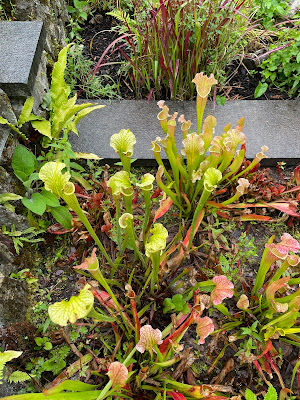

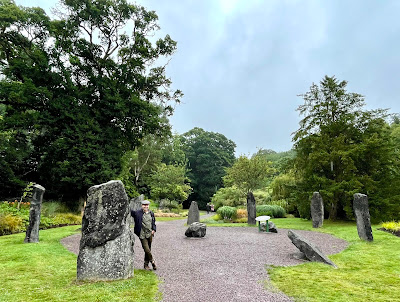



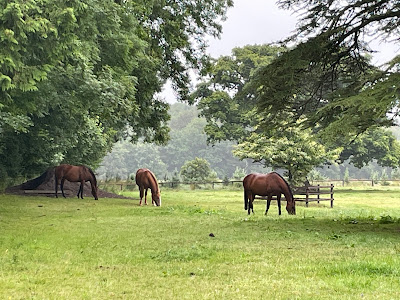


























































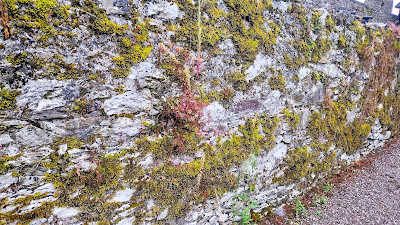



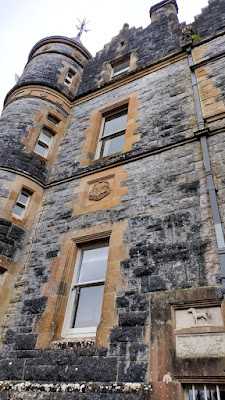





















No comments:
Post a Comment